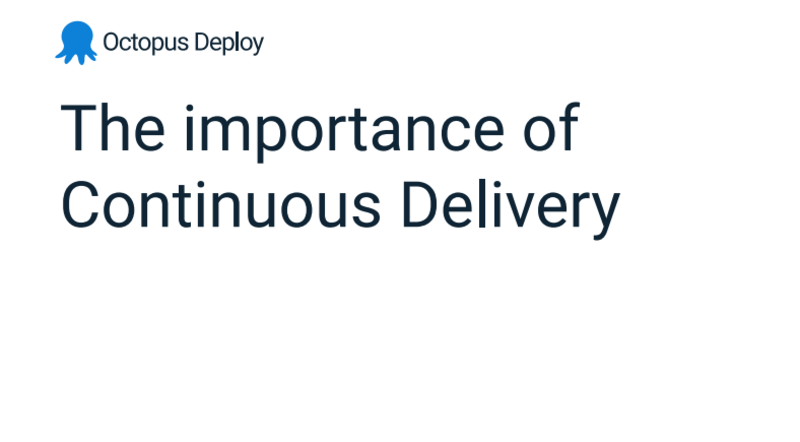Continuous Delivery: Key to High Software Performance & Speed
Published on 15 Oct 2024

The Importance of Continuous Delivery
Continuous Delivery (CD) is an essential practice in modern software development that ensures code changes are automatically tested and deployed into production, reducing time and risk in delivering software updates. But why is it so crucial for businesses to embrace CD, and what benefits can they expect?
What is Continuous Delivery?
At its core, Continuous Delivery involves automating and streamlining the entire software release process. This means every code change is built, tested, and prepared for production automatically. With a clear pipeline in place, organizations can release updates faster, more reliably, and with minimal human intervention. CD embodies several key principles, including building quality into processes, working in small batches, and continuous improvement.
Principles of Continuous Delivery
- Build Quality: Ensure that the software is tested early and continuously. By identifying defects early in the process, teams can fix issues before they affect production, saving time and reducing risks.
- Work in Small Batches: Small, incremental updates allow for faster feedback and reduce the risk of large-scale failures. Instead of waiting for a major release, teams can introduce smaller changes that are easier to manage and test.
- Continuous Improvement: CD encourages teams to continuously optimize their processes, striving for shorter lead times and quicker feedback cycles. This allows teams to respond quickly to customer needs and market changes.
Benefits of Continuous Delivery
The adoption of CD leads to numerous benefits, both for development teams and the organization as a whole.
Faster Feedback and Reduced Risk
One of the most significant advantages of CD is the ability to receive quick feedback. With automated testing and deployment, teams can instantly see the impact of their changes. This helps detect issues early, preventing costly rollbacks or downtime. Additionally, because each deployment is smaller, the risk associated with changes is minimized.
Increased Productivity and Time to Market
Continuous Delivery dramatically improves productivity. Manual deployment processes are slow and error-prone, often leading to delays and bottlenecks. CD automates these processes, freeing up the team to focus on new features and innovations. As a result, organizations that adopt CD can release new features faster, enhancing their time to market and keeping them ahead of competitors.
Improved Product Quality
With Continuous Delivery, software is constantly tested and monitored. This ensures that each update maintains a high level of quality, reducing bugs and other issues. As updates are delivered in small batches, it's easier to pinpoint where problems occur and address them before they reach production.
Overcoming Challenges in Continuous Delivery
While the benefits are clear, implementing Continuous Delivery does come with challenges. The two main areas that require attention are technical and organizational adjustments.
Technical and Process Challenges
Transitioning to CD requires organizations to invest in the right tools and technologies. Automation tools, testing frameworks, and monitoring systems are essential for creating a seamless pipeline. Additionally, processes that were previously manual need to be re-evaluated and optimized for automation.
Organizational Adjustments
Culturally, organizations need to embrace collaboration across teams. In a CD environment, developers, testers, and operations teams must work closely to ensure that changes are deployed smoothly. This shift in responsibility may require changes in team dynamics and management approaches.
Why You Should Adopt Continuous Delivery
Continuous Delivery has proven to significantly impact organizational performance. According to research, high-performing organizations that adopt CD experience faster lead times, more stable systems, and greater employee satisfaction. CD reduces downtime, increases time spent on new work, and improves overall product quality.
If your organization is looking to increase productivity, reduce risks, and improve customer satisfaction, Continuous Delivery is the way forward. By automating your release pipeline, you can focus more on innovation and less on the tedious tasks that slow down development.
To learn more about how Continuous Delivery can benefit your business, download the exclusive whitepapers for in-depth insights and case studies.
You may also like: Unlock Faster Deployments with Octopus Deploy Survey Insights
